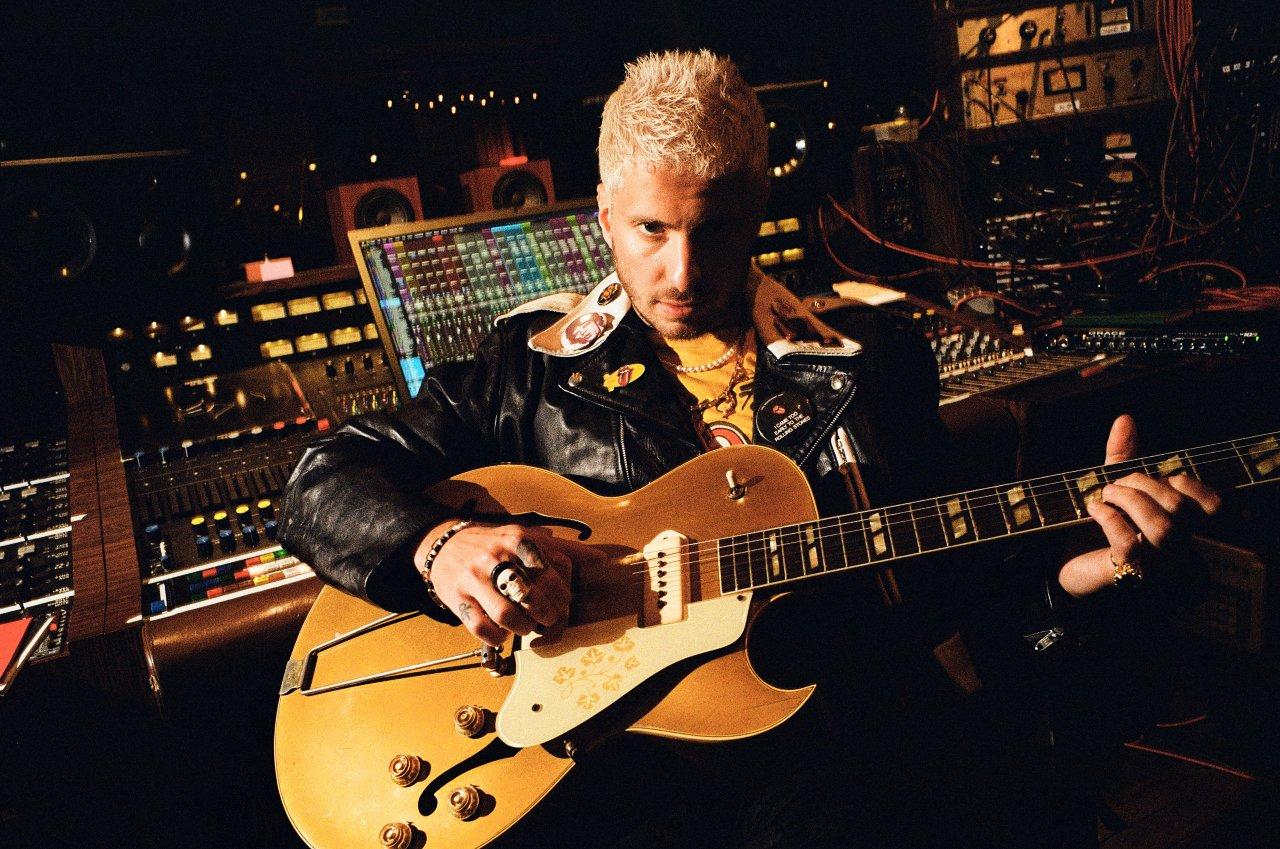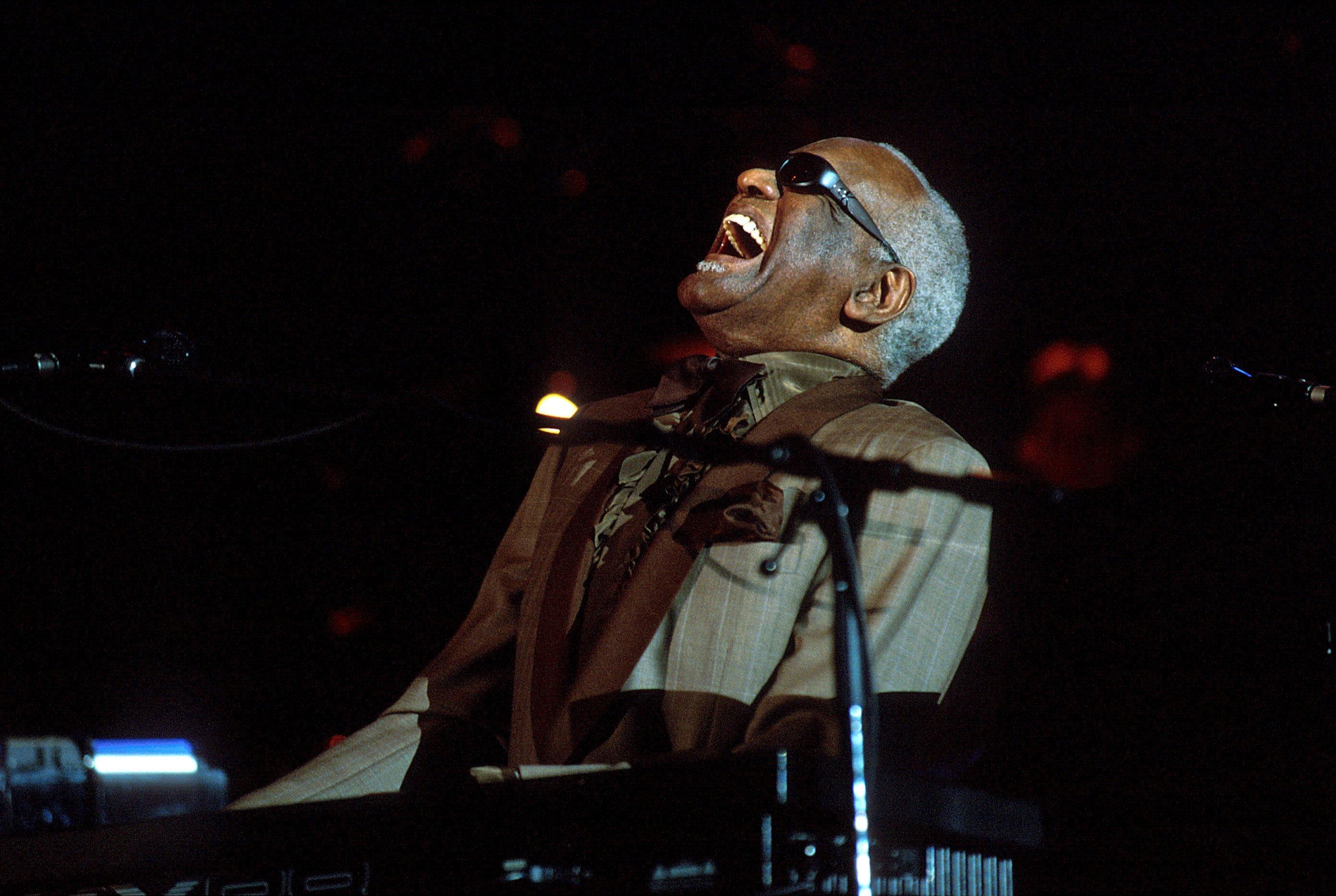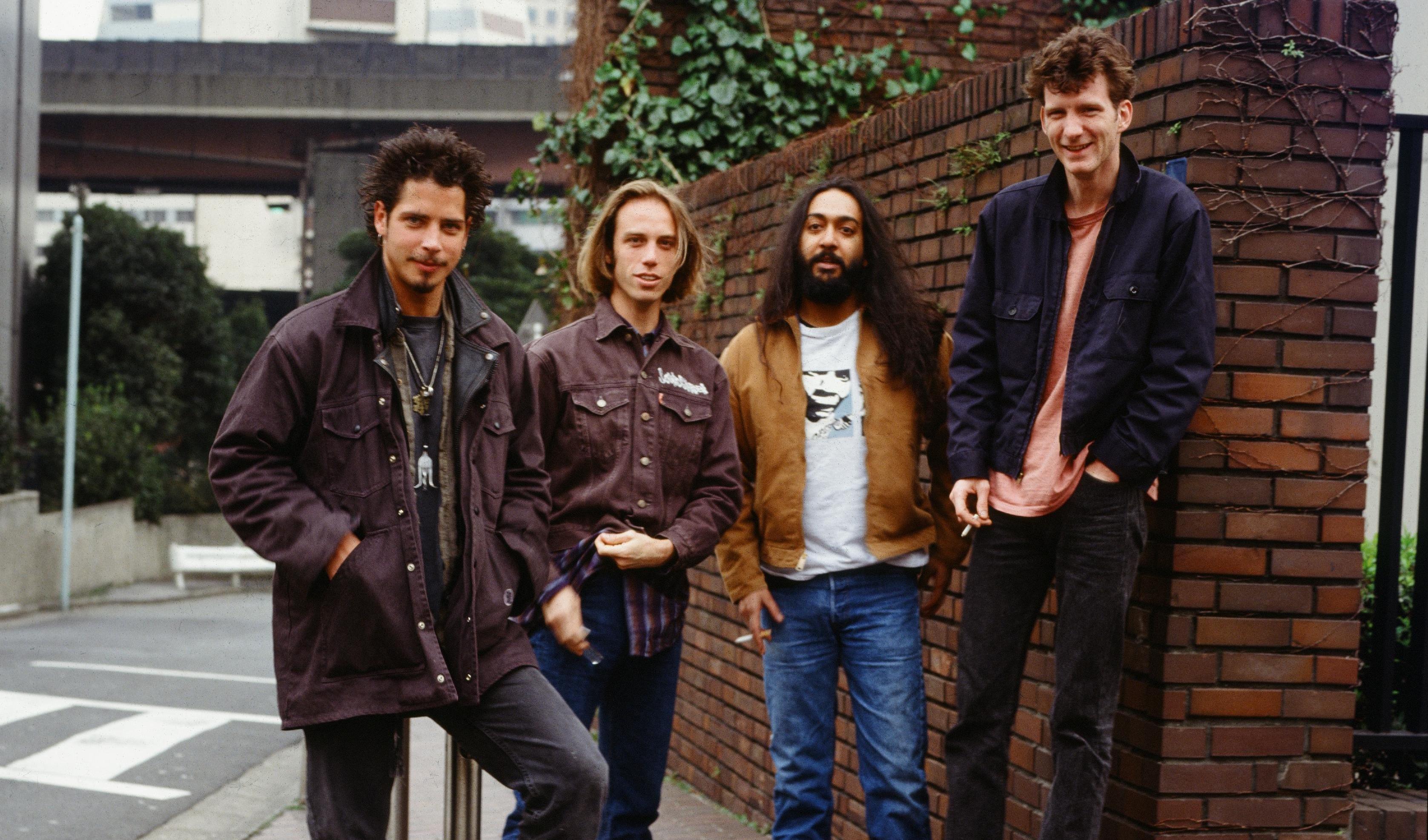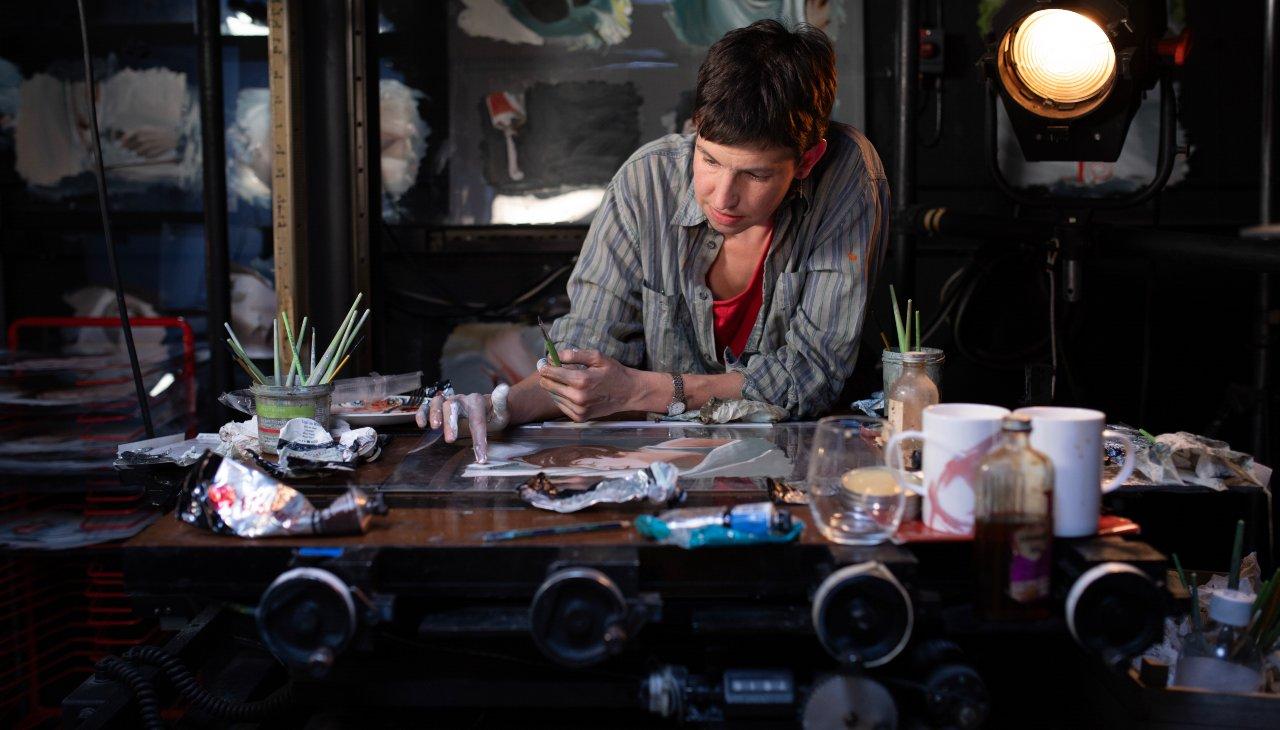The Beatles' discography can be heard as a long conversation between four brothers, and the songs on 1966's Revolver certainly talk to each other.
On "Love You To," George Harrison muses, "Each day just goes so fast/ I turn around, it's passed." On "Got to Get You Into My Life," Paul McCartney tunes in and drops out: "I was alone, I took a ride/ I didn't know what I would find there." And in every line of the somnambulant, gently roiling "I'm Only Sleeping," John Lennon declares war on awakeness itself.
Clearly, a shared energy flowed from each of their pens: an askance look at linear time, and how it pertains to modern society. And while painstakingly painting more than a thousand frames for "I'm Only Sleeping," oil painter and animator Em Cooper picked up exactly what Lennon was transmitting.
"I really love the fact that this is some major call towards rest and sleep and dreaming and allowing your mind to wander," the effervescent Cooper tells GRAMMY.com over Zoom. Productivity, efficiency, investment, return: as Lennon seemed to sing, they're for the birds.
As the lore goes, McCartney in 1966 was a man about town, soaking up Stockhausen and Albert Ayler and the avant-garde, while a suburbia-bound Lennon opted to drop acid and, well, lay in bed.
This is reflected in their contributions to Revolver, which got a 2022 remix and expansion: McCartney's tunes, like "Here, There and Everywhere" are borderline classical, while Lennon sometimes couldn't be bothered to add a third chord. But Lennon being Lennon, he made inertia into a transcendent force.
"It feels as though it's a bit of a protest against the calculus view of time and the idea that our time is for sale, we can just slice up our hours and sell it off by the chunk," Cooper says. "I feel like in John's desire for just letting himself sleep and rest, he's saying to the world, 'Let's allow ourselves our own time, our own lives.'"
But the experience of making the "I'm Only Sleeping" clip — which involved painstakingly painting each frame by hand — was anything but tranquil: at times, Cooper even found it painful. This labor of love paid off, though: it's nominated for Best Music Video at the 2024 GRAMMYs.
Cooper details the development of "I'm Only Sleeping" video, her methodology for mapping the visuals to the music, and, after numberless listens, whether she's sick of this Revolver favorite.
This interview has been edited for clarity.
The Beatles' story is filled with unforgettable sights, and with the "I'm Only Sleeping" video, you added to their visual language. Was that a daunting responsibility?
Absolutely. It really was. And, I think maybe if I had really stopped to think about it too much, it would've really tightened me up. In a way, weirdly, I was quite lucky it was on a tight schedule. That took precedence. I was just in the flow, trying to just focus on each task ahead of me and get it done.
Sophie Hilton, who's the Creative Studio Director at Universal Music, commissioned the film with Jonathan Clyde from Apple Corps. They were very good at guiding the project in a very natural way, so that it made a very natural fit into where they needed it to fit, as it were, in that big, big legacy. So, the fact that I'm an oil paint animator and I work with archive footage — it's got that timeless quality a little bit to it anyway, as does the song.
I worked with the Beatles' archivist, Adrian Winter, who helped me find footage; managing to place it within the history of the Beatles was really important. I didn't get too worried until finally when it came out.
And then, literally, that was the first moment it really hit me about the legacy — of what I suddenly realized I'd just done.

*Photo courtesy of Em Cooper.*
Like the experience of sleep itself, "I'm Only Sleeping" is flowing, undulating. It looks like you picked up on that, with this impressionistic continuum of visuals.
Yeah, absolutely. I was inspired by the song itself, because the song has just that continuous rocking motion to the melody. It was as though it was a synesthetic reaction to the song. It felt almost like it just drew itself out in my mind — the movement all kind of choreographed itself around those moments where it's like [sings lyric in dramatic swoop] "Yawning," and then it felt like it goes over the top.
But, I don't know whether everybody else hears that when they hear that lyric, but that's certainly what I heard, and I could just produce that movement to match. All I really felt I had to do was just stay incredibly true to the song and the movement that was already there, and it just flowed.
How did you do this under such a tight schedule? One thousand, three hundred oil paintings?!
Yeah, I'm not going to lie. It was painful. It was a very tight schedule to produce an entirely hand-painted oil paint animation in. I literally painted every frame on a cel; sometimes, I painted and wiped and repainted.
It's hard work, but I just love oil painting. Now that I've had enough projects that it flows out of me, I find I'm reasonably quick. Some parts were easier than others; doing the faces was particularly difficult. Trying to get John Lennon's likeness over and over again was a real challenge, but other parts of it were much easier.
Obviously, lots of people these days are working digitally to do drawings and things, but I just work in actual oil painting. I find that I'm definitely not quicker at doing something digitally than I am just manually.
I suppose I want to promote the real artforms, because actually there isn't anything that much quicker or different about dipping a brush in some red paint and doing a stroke than doing a digital stroke. If you just gain confidence, it's fine.
How did you collaborate with Apple Corps on this, whether they offered artistic direction or just moral support?
Jonathan Clyde really helped direct all of that. I put all my ideas together into a document, and there was lots of consultations with them and honing those ideas and making sure that they fit with everybody's vision and what everybody was thinking.
And then, carrying on honing and honing, so that by the time I got to actually going, Yeah. We're going for it. We're going to start making this, it was all very clear.
I did a pencil-drawn animatic, which was about, I think two frames a second, which is quite a lot for an animatic, so as to really show the flow of imagery, so that there were no questions. I think there were a couple of changes after that, but very, very few.
So, it was quite clear, and everybody agreed on all the imagery and everything. But, I came up with most of it andwould maybe put some suggestions.
And, we came up collectively with this idea of the backwards guitar sequence going backwards through Beatles' history from that moment, from 1966 backwards as it were, so as to the feeling from Revolver back to the beginning of the Beatles.
And, I was trying to meld that all together with the magnetic tape in the magnetic tape recorders going in and out of that. It was group calls, so I would take one and spark off and think, Oh, yeah. I remember Adrian Winter, the archivist, mentioning how John Lennon often had a notebook with him because he was always just thinking of ideas; he suggested that. And so, I put the notebook next to his pillow and things like that.
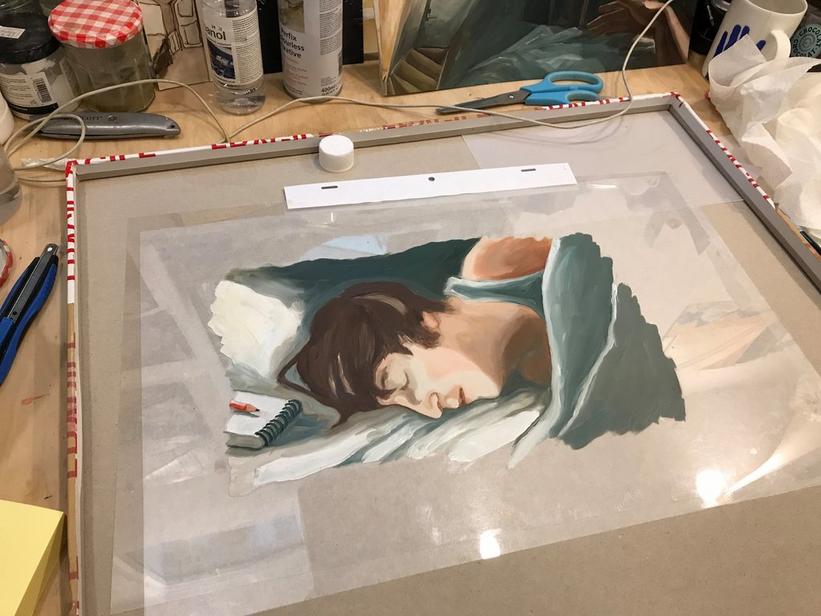
*Photo courtesy of Em Cooper.*
When Giles Martin's remix of Revolver came out, it was striking how modern it sounded. How did this project enhance your appreciation for this song, album and band?
I watched it again just before jumping on this call with you, and I love the song. I was listening to little individual parts of it over and over again, whilst I was working on it, getting really into the detail of tiny bits of each line. And, it holds up, it's so good. I do not get bored of it. I love it.
I just could carry on listening to it over and over, which really, to be honest, says a lot, because when you work very hard on something, you do tend to find yourself a little bit bored by it by the end. But, absolutely not the case with this.
And, actually, after it was all finished, we went to Abbey Road together as a treat to listen to the [remixed and] remastered version of Revolver that was being re-released, and wow! To listen in Abbey Road Studios with the surround sound, it was just mind-blowing.
I already had an incredible respect for the Beatles, and that has only grown.
2024 GRAMMY Nominations: See The Full Nominees List

